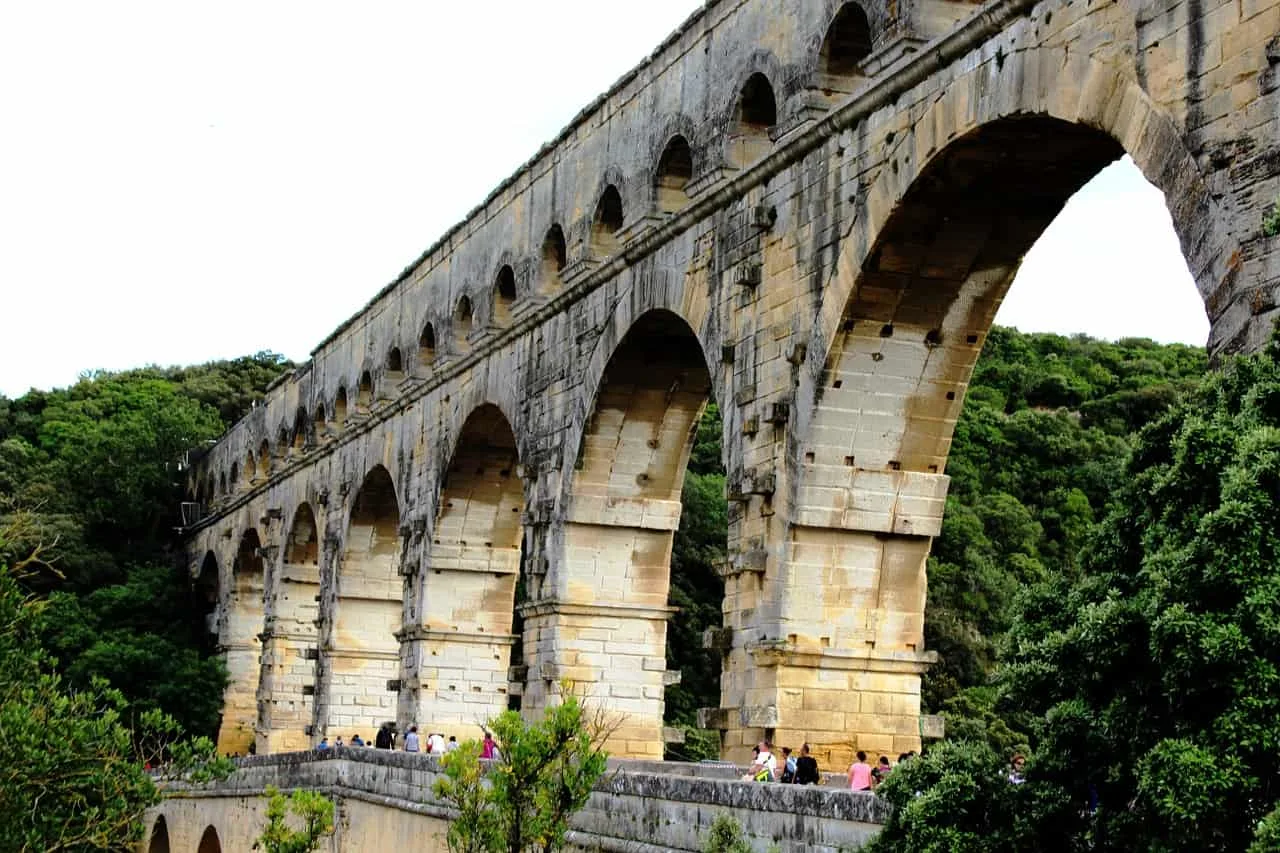One of the most fascinating bridges ever constructed dates back to ancient times.
In this post, you’ll discover the ultimate list of facts about the Pont du Gard, one of the most stunning bridges in France.
1. It’s located in the south of France
The Pont du Gard is part of an ancient Roman aqueduct that crosses the River Gardon in the town of Vers-Pont-du-Gard in the south of France. It was built to supply the Roman colony of Nemausus with water.
Nemausus is the modern-day city of Nîmes, the biggest city in the Gard department in the south of the country. It has sometimes been dubbed the “Most Roman city outside of Italy.”
Apart from the Pont du Gard, it is home to multiple other Ancient Roman monuments, including the Arena of Nîmes, a Roman amphitheater similar to the Colosseum in Rome which is still being used today (albeit for concerts and bullfights, not gladiatorial combat), and the Maison Carrée, a well-preserved ancient Roman temple in the center of the city.

2. The Aqueduct was built in the first century A.D.
One of the most amazing facts about the Pont du Gard is that this massive structure was built in the first century A.D. Yes, that’s right, that’s almost 2,000 years ago!
It was long assumed that it was built during the reign of Augustus, the first Roman Emperor who ruled between 27 B.C. and 14 A.D., and his main architect Marcus Vipsanius Agrippa, famously known for the Roman Pantheon.
It’s now assumed though that the bridge was actually built between 40 and 60 A.D. Excavations have uncovered the fact that tunnels dug during Augustus’ reign had to be bypassed to build the aqueduct.

3. It’s the highest Roman aqueduct ever constructed
The bridge is an amazing feat of engineering, built on 3 levels, standing about 48.8 meters (160 feet) above the river at low water. This makes it the highest of all Ancient Roman aqueduct bridges ever constructed!

It also has a length of 275 meters (902 feet), which was originally actually 360 meters (1,180 feet). The bridge is 9 meters (30 feet) wide at the bottom and 3 meters (9.8 feet) wide at the top.
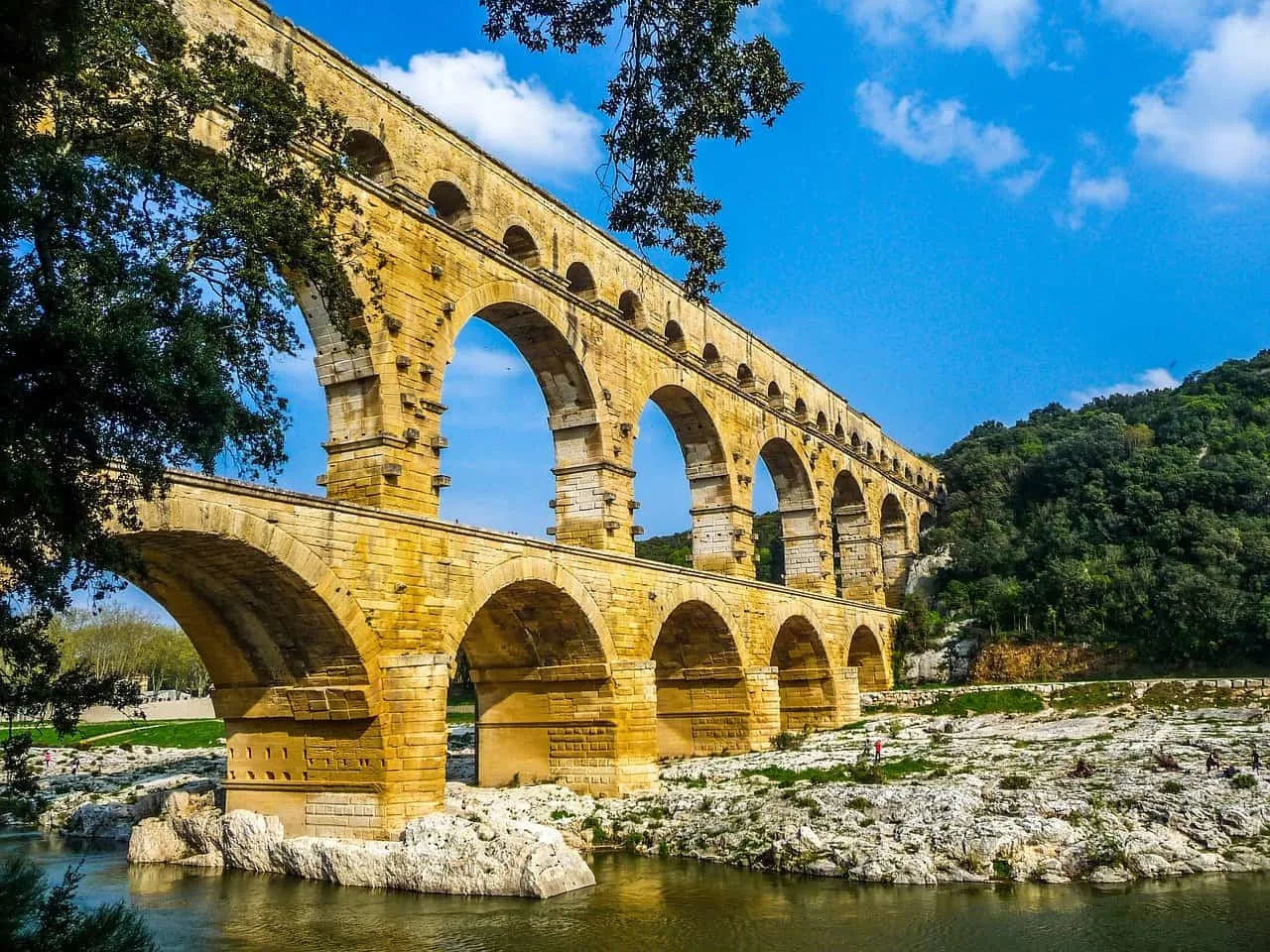
4. The bridge originally consisted of 64 arches on 3 levels
Each of the 3 levels that make up the bridge was built with arches that were stacked on top of each other. The first level consists of 6 arches with 5 piers standing in the water. The piers on this level are 6 meters (20 feet) thick and 22 meters (72 feet) high.
The second level consists of 11 arches with the arches being 4 meters (13 feet) thick and 20 meters (66 feet) high.
The third level originally consisted of 47 arches that were 3 meters (9.8 feet) thick and 7 meters (23 feet), giving the bridge a total length of 360 meters (1,180 feet). Over the centuries, this number was reduced to just 35 arches and a total bridge span of 275 meters (902 feet).
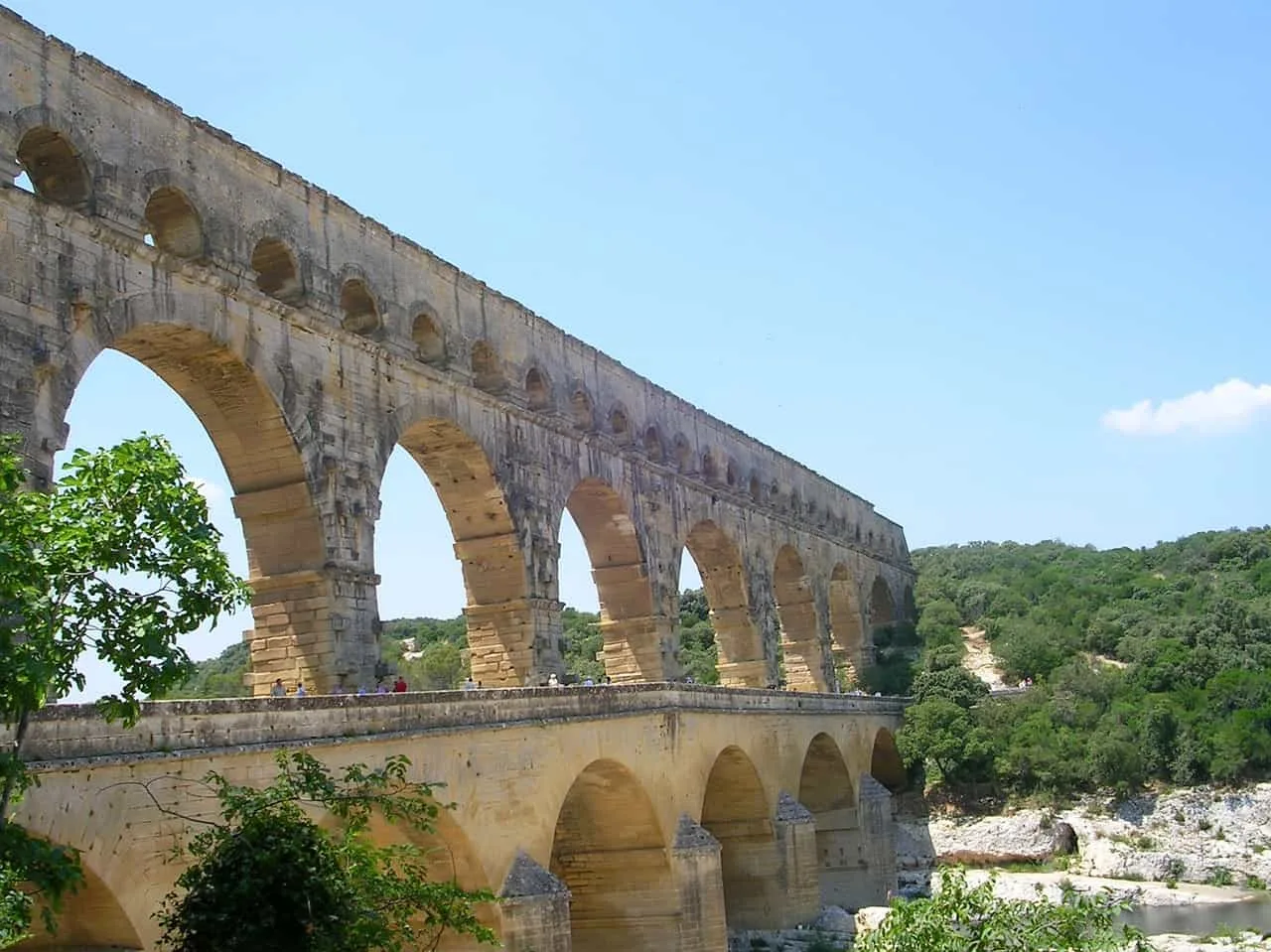
5. It continuously supplied water for over 50,000 people
The purpose of this massive aqueduct was to divert the water coming from springs nearby to the city of Nîmes, providing continuous running water for the citizens and various public places, including multiple bathhouses and fountains.
It was even possible to completely fill the amphitheater with water with the switch of a handle with the purpose to host mock naval battles!
All of the water was diverted into the “castellum divisorum,” a basin that distributed the water through pipes to the houses of the approximately 50,000 people living in the city back then.
It’s estimated that the aqueduct could provide 40,000 cubic meters (8,800,000 gallons) of water to the city every single day, a massive amount!
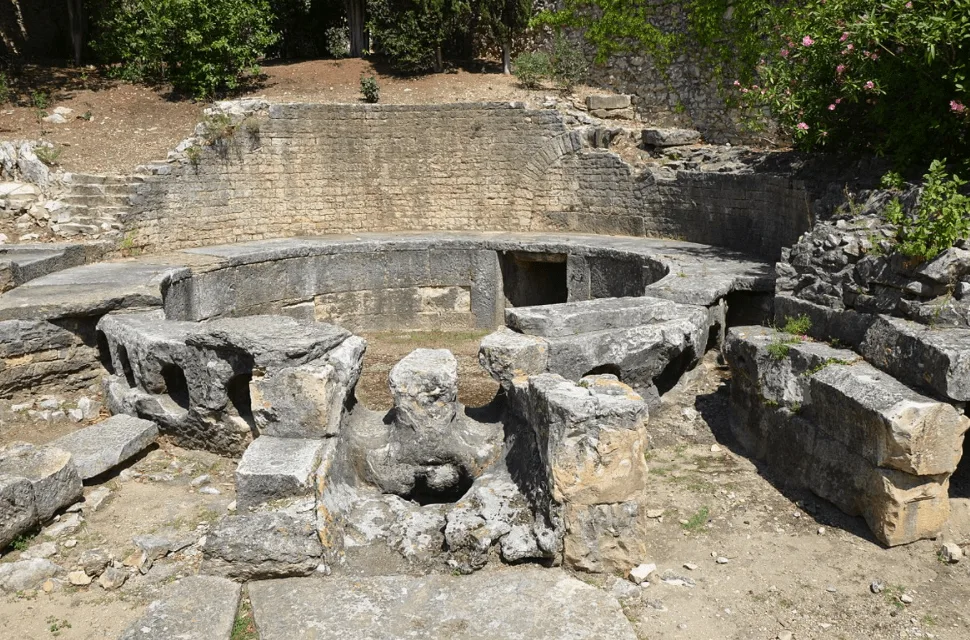
6. It was constructed with extreme precision
One of the most interesting facts about the Pont du Gard is that over the entirety of the bridge’s length, it only descends about 2.5 centimeters (1 inch), a gradient of only 1 in 18,241!
The aqueduct itself carried water over 50 kilometers (31 miles), from the springs of the Fontaine d’Eure near Uzès. Over this distance, the aqueduct only descends in height by only 12.6 meters (41 feet).
Just imagine the level of precision the Roman engineers were able to achieve with a limited number of tools available, it’s really amazing, don’t you think?
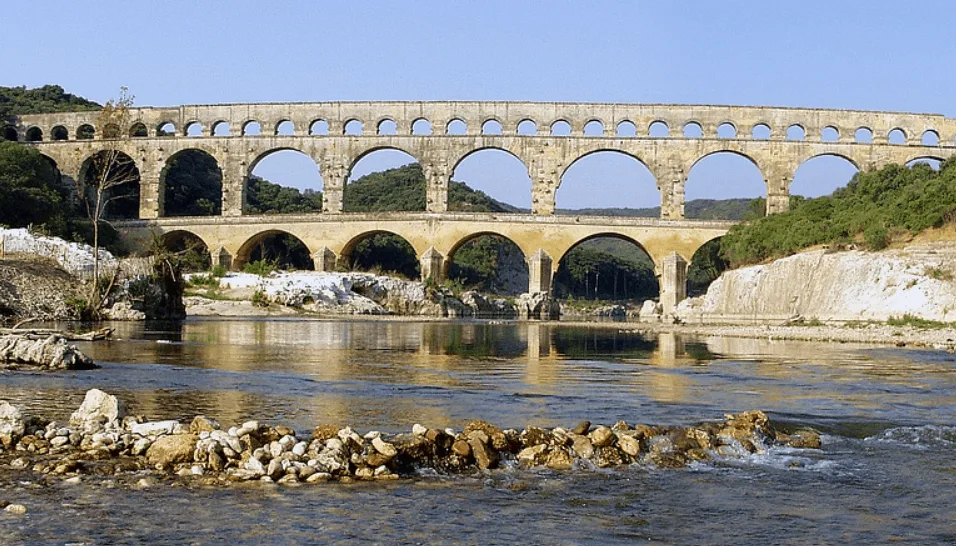
7. The aqueduct is much longer than the distance to the springs
What’s equally fascinating is that the springs near Nîmes are much closer to the city than the actual length of the aqueduct. While the structure has a total length of 50 kilometers (31 miles), the distance to the springs in a direct line is just 20 kilometers (12 miles).
The reason why the Romans built the aqueduct over double the length as the distance to the springs is to avoid the hills to the west, which were too high, and the plains to the south and east, which were too low for the water to flow.
It just shows the extreme level of planning that the Romans conducted before the construction of this massive project started.
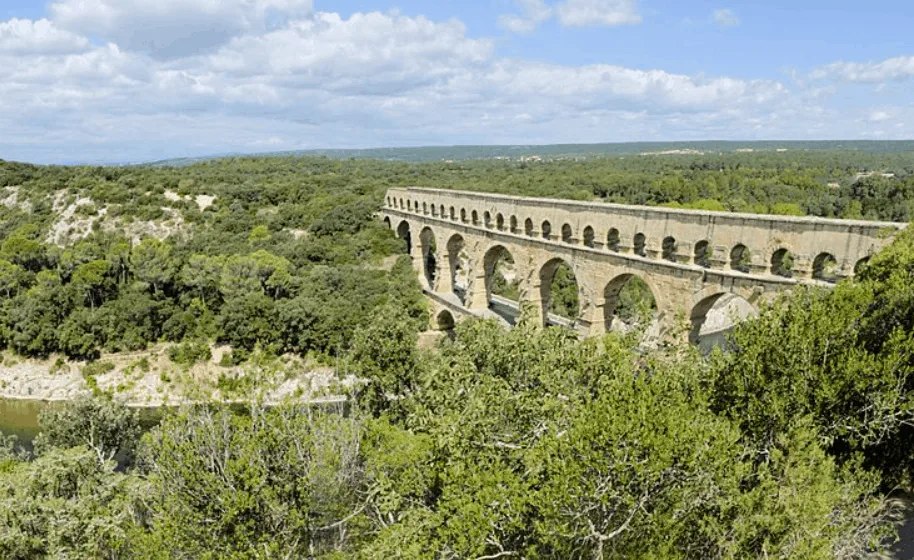
8. The Romans didn’t use any mortar to build the Pont du Gard
One of the most remarkable facts about the Pont du Gard is that the Romans didn’t use any mortar, even though the structure consists of 50,400 tonnes of limestone with a total volume of 21,000 cubic meters (740,000 cubic feet).
So how did they ensure the bridge didn’t collapse?
They solely relied on extremely precise masonry, with the stones cut in such a way that they fit together perfectly. The result is amazing because, after nearly 2,000 years, the bridge still stands with only erosion being the main threat!
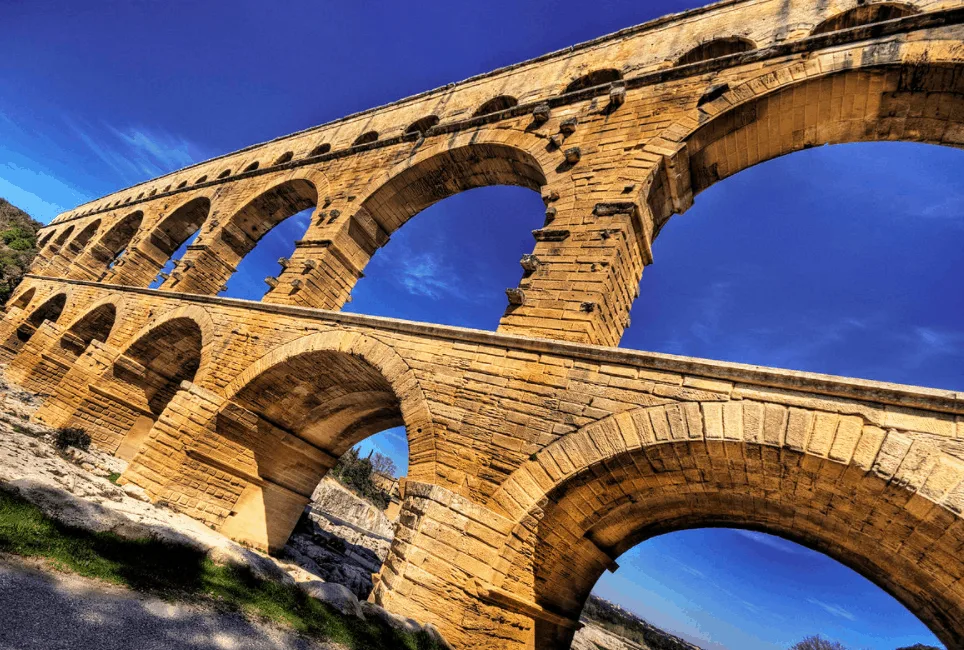
9. Some pretty ingenious tools were used to build the bridge
Some of the biggest stones weigh an estimated 6 tonnes, so it was convenient that the quarry was located just 700 meters (2,300 feet) downstream in Estel on the banks of the river.
They did, however, still have to hoist these massive stones into position without the use of modern equipment!
While the smaller blocks could have been lifted into position using block and tackle pulleys, the massive blocks were probably done with a massive human-powered treadmill. These types of tools were used on construction sites until the 20th century.
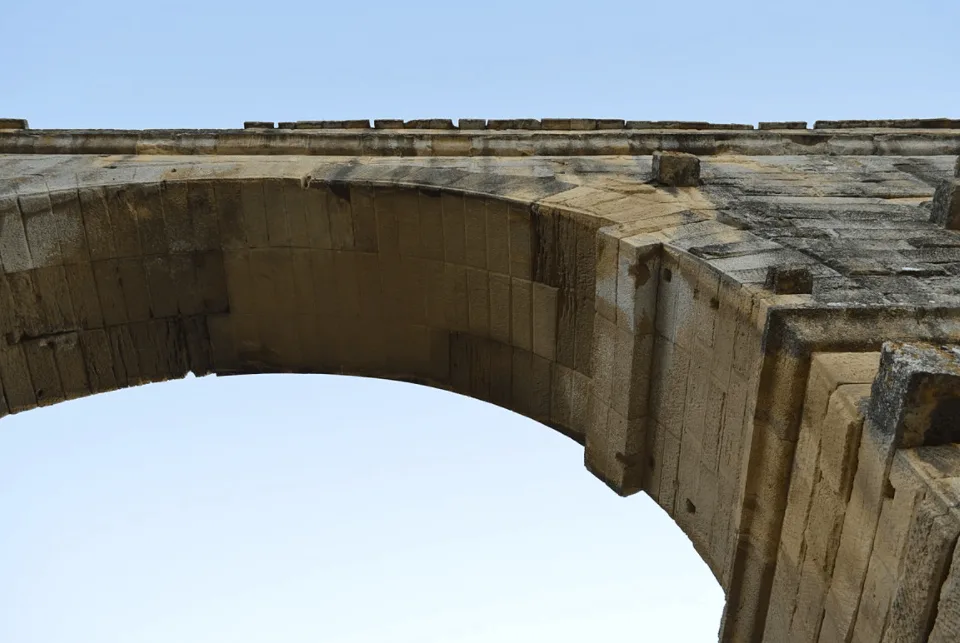
10. Building the bridge cost way more than it actually should have
Even though the bridge has been praised as one of the most remarkable feats of engineering in history, it’s not the most efficient building ever constructed.
It’s estimated that the price to build the aqueduct was about 30 million sesterces (Roman gold or silver coins), a huge amount. This could have easily been cut in half if the design was more efficient.
Especially stacking arches on top of each other was complicated and most probably skyrocketed the construction cost.

11. Maintaining the aqueduct was a complicated task
With the construction cost sky-high, things weren’t finished. The interior of the aqueduct was very smooth in order to ensure the water wouldn’t be obstructed, but there were some huge problems.
While the spring is a great source of water and is actually still in use today, the water is high in dissolved calcium carbonate which reduced its flow significantly.
Perhaps the biggest problem was vegetation penetrating the 50 kilometers (30 miles) long aqueduct, which didn’t just to obstruct the flow, but also produce algae that contaminated the water.
Therefore, maintaining it was a continuous effort conducted by so-called circitores, workers who spent their entire day inside of the aqueduct to clean it and remove vegetation.
This wasn’t exactly a dream job but it certainly beats fighting wild animals at the amphitheater!
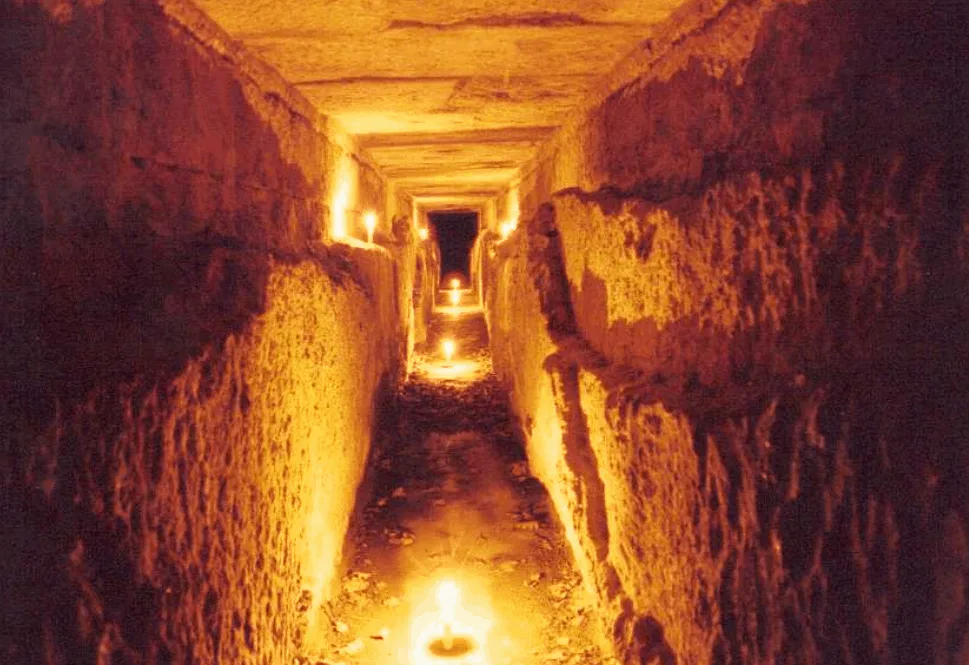
12. The bridge next to the aqueduct was built in the 18th century
Right next to the Pont du Gard there’s an additional bridge that was constructed between 1743 and 1747 to enable road traffic to pass the river right next to the Ancient Roman aqueduct.
While this structure was initially received with a lot of criticism, it also allows tourists to get a very close look at the marvelous engineering skills of the Ancient Roman engineers!
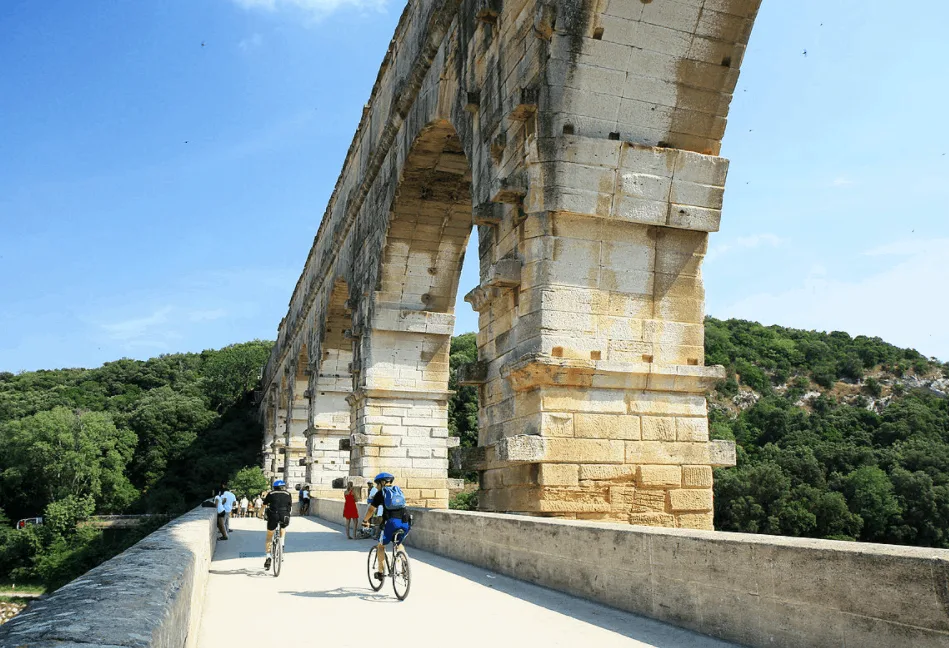
13. There’s a reason why the bridge is still in such a good shape
While some of the stones of the top section arches were removed to be used in other construction projects over the centuries, most of the bridge is still intact.
Granted, we have to congratulate the ingenuity of the Roman Engineers who built this massive structure, but there’s another reason why the bridge is still in such a good position, and that is money!
The aqueduct eventually got abandoned in the 6th century, with some parts even used much longer, it eventually found a new purpose as a way to collect tolls of people passing it.

14. Without renovations, the bridge might have collapsed already
Another reason that the bridge still stands today is that it has been restored multiple times. The first major renovation was conducted in the early 18t century when several damaged stones were replaced.
The most extensive renovation was done by Napoleon III who was a fervent admirer of everything Roman. Between 1855 and 1858, the severely deteriorated Pont du Gard was completely renovated with multiple eroded stones replaced and concrete added to the piers to increase its stability.
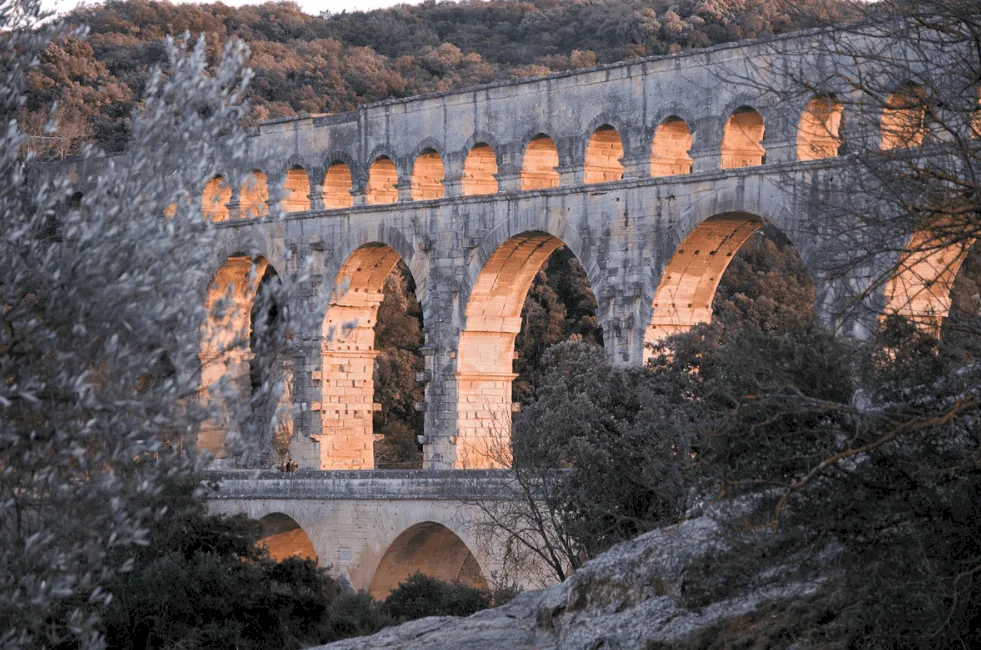
15. It’s a UNESCO World Heritage site and popular tourist attraction
The Pont du Gard is one of the most iconic landmarks in France and has therefore been added as a UNESCO World Heritage Site in 1985.
By the 1990s, the bridge was literally swarmed by tourists, turning it into a “fairground attraction,” with numerous shops and illegally built structures surrounding it.
Since then, serious measures have been taken to preserve this amazing monument by the French Government, the EU, and UNESCO, and while it’s still a popular attraction with over 1 million visitors each year, the atmosphere is a lot more enjoyable ever since!
